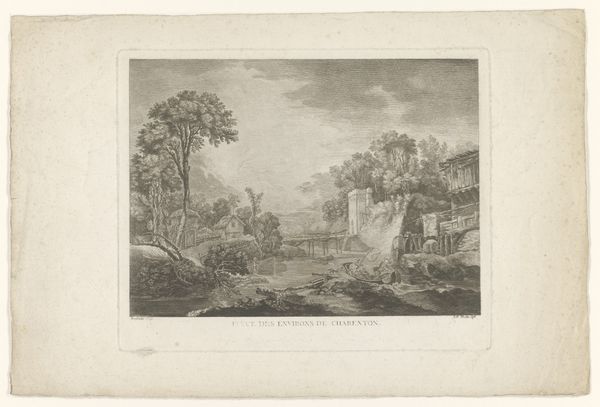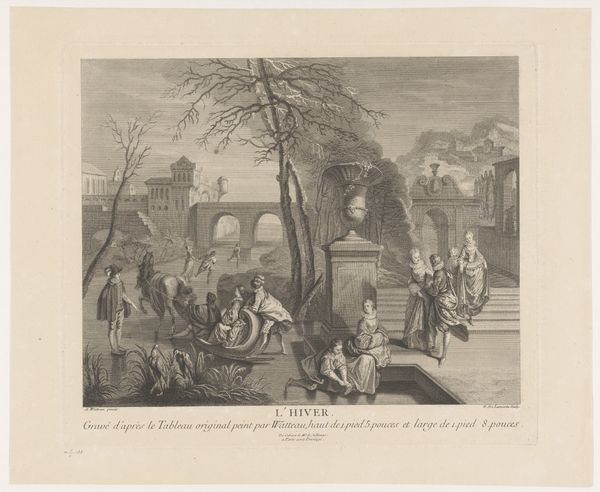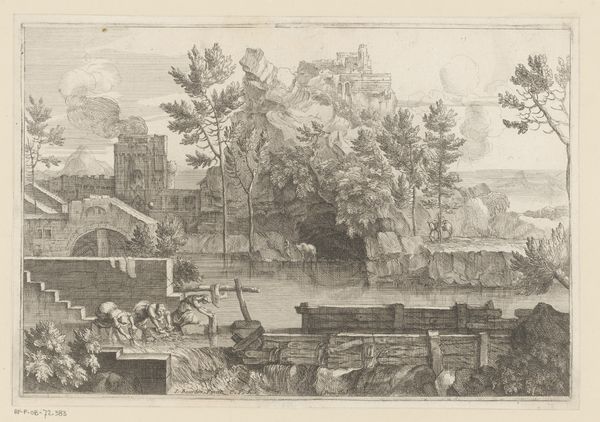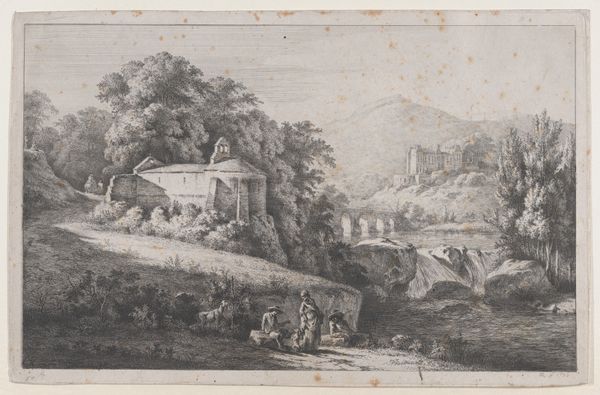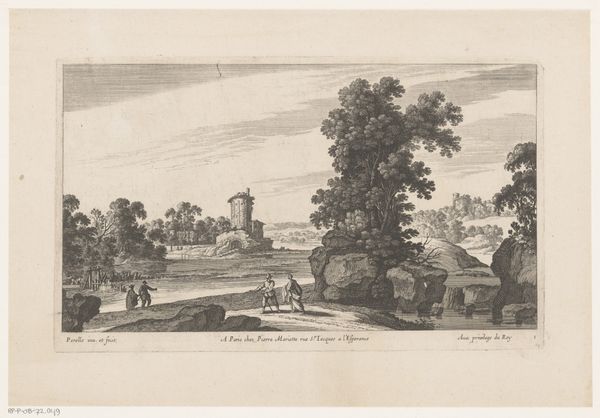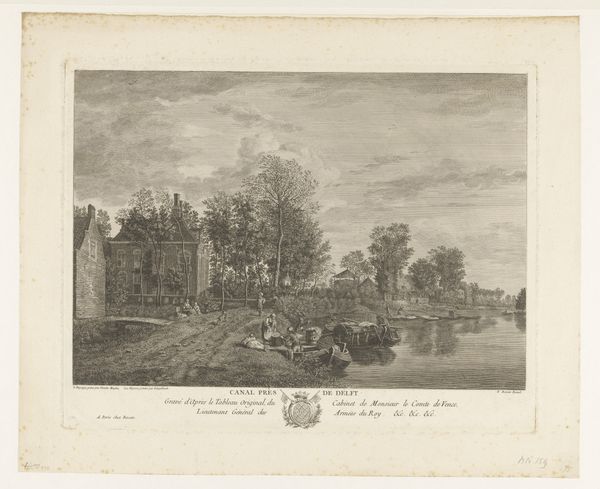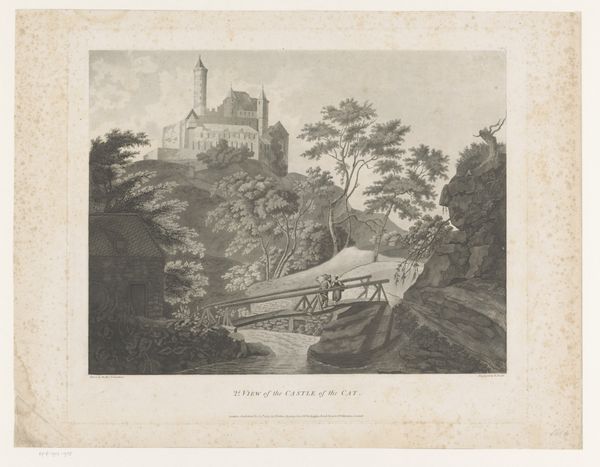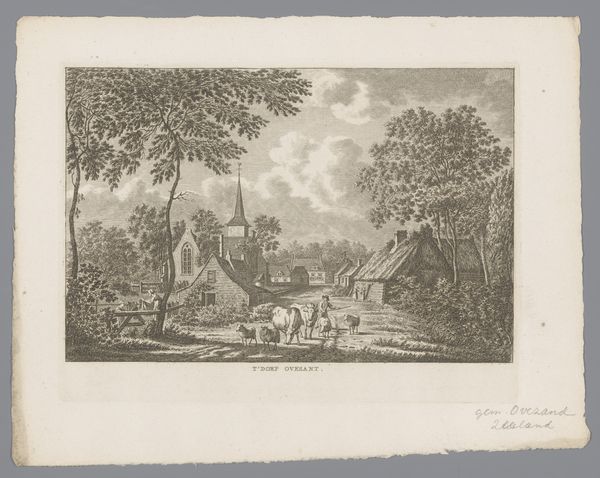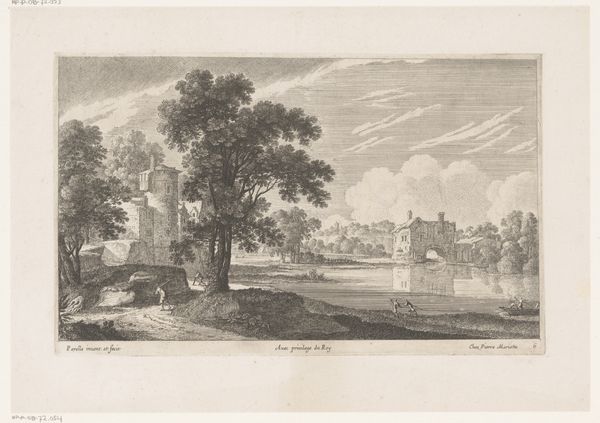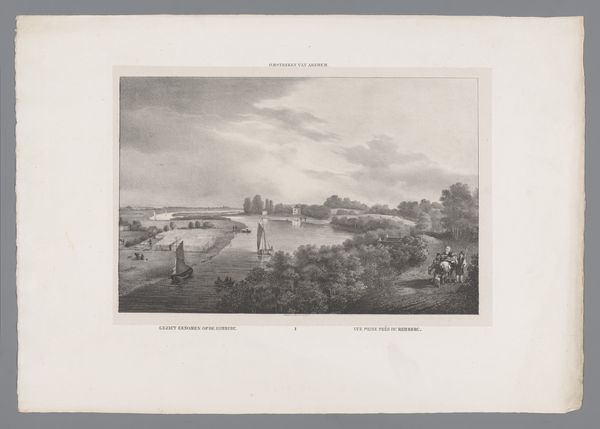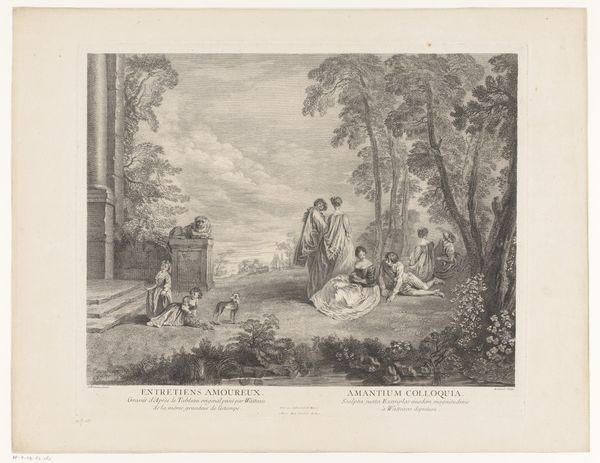
engraving
#
narrative-art
#
baroque
#
old engraving style
#
landscape
#
cityscape
#
genre-painting
#
engraving
Dimensions: height 349 mm, width 402 mm
Copyright: Rijks Museum: Open Domain
Curator: Let's explore "Lente," an engraving from around 1732 created in the style of Watteau. Editor: Immediately striking, isn’t it? A kind of elegant melancholia pervades the scene. The crisp lines of the engraving process capture such ephemeral moments of leisure. Curator: Indeed. What interests me is how this cityscape, bustling with leisurely figures, operates within a framework of privilege and power. It is impossible to uncouple from the gender and class hierarchies it implicitly represents. Editor: But isn't that precisely what the medium – engraving – accomplishes? It takes something painted, inherently individualized, and transforms it into something reproducible. Distributable. Look closely at the details of the people – the textiles of their clothing, how that’s all translated to lines and hatching, to make multiple copies. Curator: Certainly, but let's not divorce it from its context. While engraving democratizes access somewhat, the content remains resolutely elite. The women especially, relegated to musical entertainment and passengers on the boat, reinforces societal roles. This wasn't exactly protest art. Editor: No, I see that. The actual labor in creating and consuming luxury like this engraving and the painting upon which it is based, always obscures labor elsewhere. But looking closely at the process of engraving, it brings us face to face with the skilled hands that make the very illusion of leisure we are speaking about, a very particular material. Curator: And those hands belong to those absent from this fantasy. I am constantly grappling with the need to acknowledge both the aesthetic qualities and these structural inequalities simultaneously. Can we truly appreciate beauty without interrogating its socio-political underpinnings? Editor: Perhaps beauty, true beauty, resides in recognizing those tensions, examining both the labor behind it and the cultural values it embodies. Curator: A dialectical appreciation. Yes, I think I can agree with that. Editor: Indeed, seeing beauty and acknowledging what made it, how it got to be, this shifts the way we see art.
Comments
No comments
Be the first to comment and join the conversation on the ultimate creative platform.
